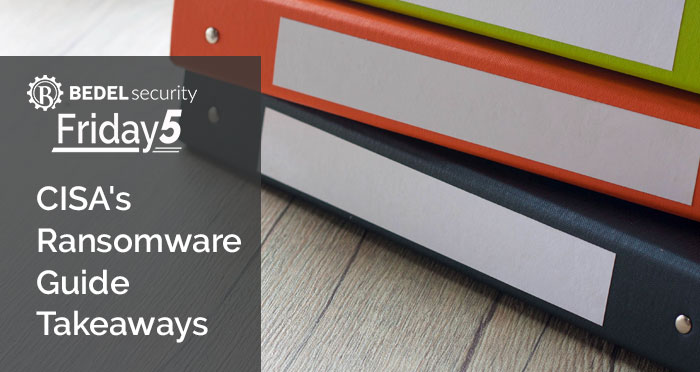CISA's Ransomware Guide Takeaways
Ransomware has become more common in the past year with the hackers constantly changing tactics, such as moving from infecting backups to deleting...


We knew this was coming; in my inbox today landed the threat intelligence we have been expecting, which is the most common ways cybercriminals are using fear and uncertainly to hack people and businesses. In summary, it’s the same old tricks, but with new bait. As you can imagine, this is the major news focus for everyone currently so it’s only the beginning of this theme. Empower and educate yourself, employees, family and friends with the breakdown below.
Here they are based on CISA’s Alert (AA20-099A):
As all successful phishing emails do, there is a call to action- most commonly to visit a website poised to steal personal, credit card and usernames and passwords.
Recommended Actions: Many security education platforms released COVID-19 phishing email templates a couple weeks back so if you haven’t already, seize the moment and send them out to remind your users to be skeptical of these emails. It also wouldn’t hurt to make sure your email system filters are enabled, up to date and quarantining suspicious messages.
Cyber criminals are also starting to pick up on other messaging services as well so keep your guard up on other platforms.
Recommended Actions: Spread the word that COVID-19 relief payments will not be solicited from common messaging services. Reach out to reliable resources and news channels to understand relief payment terms.
Recommended Actions: In addition to actions in the phishing section above, ensure your antivirus is enabled and up to date, your systems are backed up in a separate location or network from your production network and your email is configured to identify and quarantine malicious attachments.
Recommended Actions: Check the site address for misspellings or other strange structure or red flags. Go to the site directly, not through a shared link. Using webfiltering capabilities for known malicious sites may also help but may not be a perfect solution as these take time to discover and report malicious sites.
Other targets are conference meeting platforms, including Zoom and Microsoft Teams either by phishing emails with file names including the platform and numbers in executable files in addition to hijacking meetings without passwords or unpatched software versions.
Recommended Actions: Keep infrastructure and software patched and patch solutions prior to deployment. Secure conference meetings with passwords and use online waiting rooms to admit participants or other security controls where available in your platform of choice.
If you need help to keep your security program in step with the new COVID-19 threat landscape, we would love to help. Contact us at support@bedelsecurity.com or 833-297-7681.
Also, be on the lookout in the next week for a new free resource we're developing to help institutions with some of the new risks they're taking on during this time!
Remote Access Risk Assessment
https://www.bedelsecurity.com/lp-remoteriskassessment
It's a Bad Time for a Cyber Breach
https://www.bedelsecurity.com/blog/its-a-bad-time-for-a-cyber-breach
Remote Work Security
https://www.bedelsecurity.com/blog/remote-work-security
Update: What We're Seeing From the COVID-19 Pandemic Planning Front
https://www.bedelsecurity.com/blog/update-what-were-seeing-from-the-covid-19-pandemic-planning-front

Ransomware has become more common in the past year with the hackers constantly changing tactics, such as moving from infecting backups to deleting...

Recently, I was presenting to a risk management forum at a banking association on cybersecurity and the question came up as to whether my company...

CISA, the US Cybersecurity & Infrastructure Security Agency, began an initiative to help organizations manage cloud risks with the Secure Cloud...